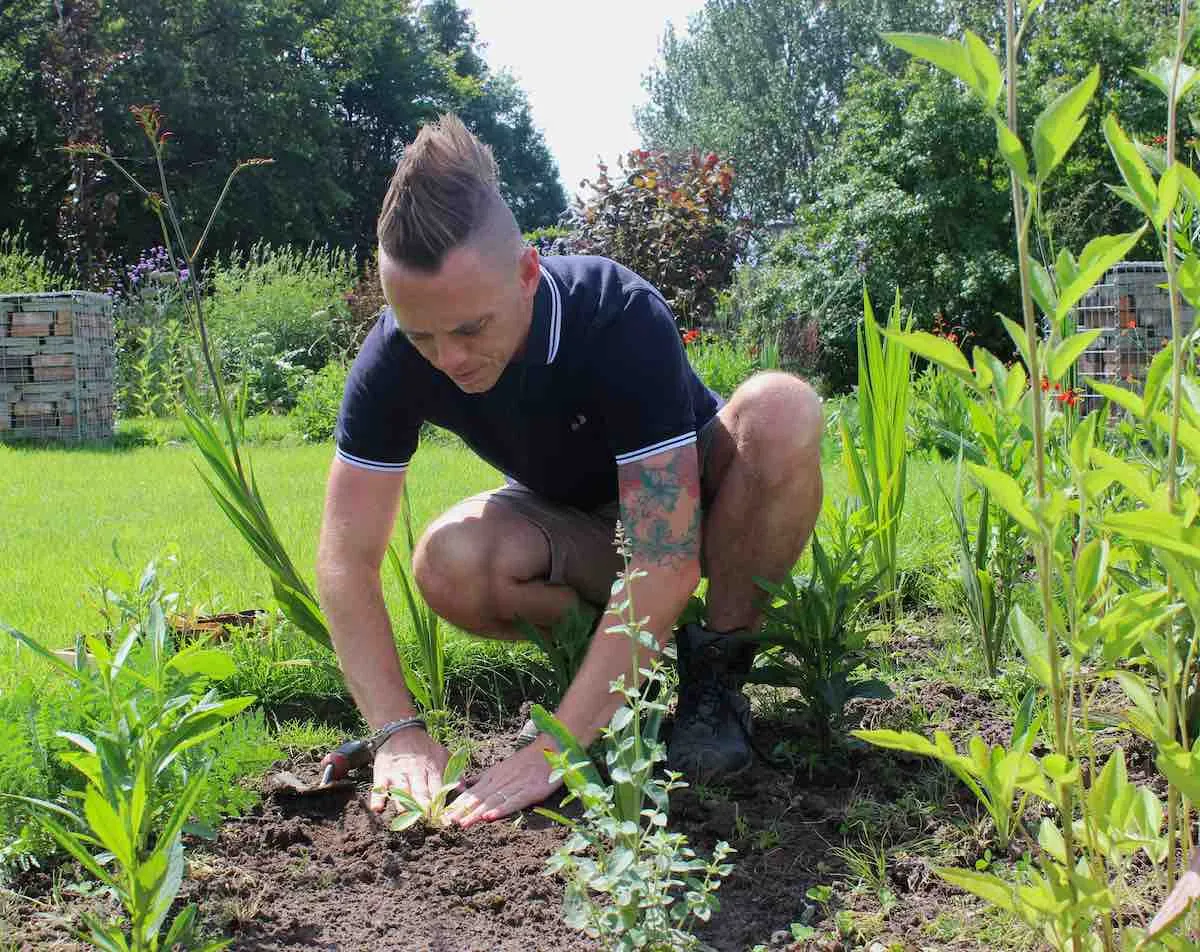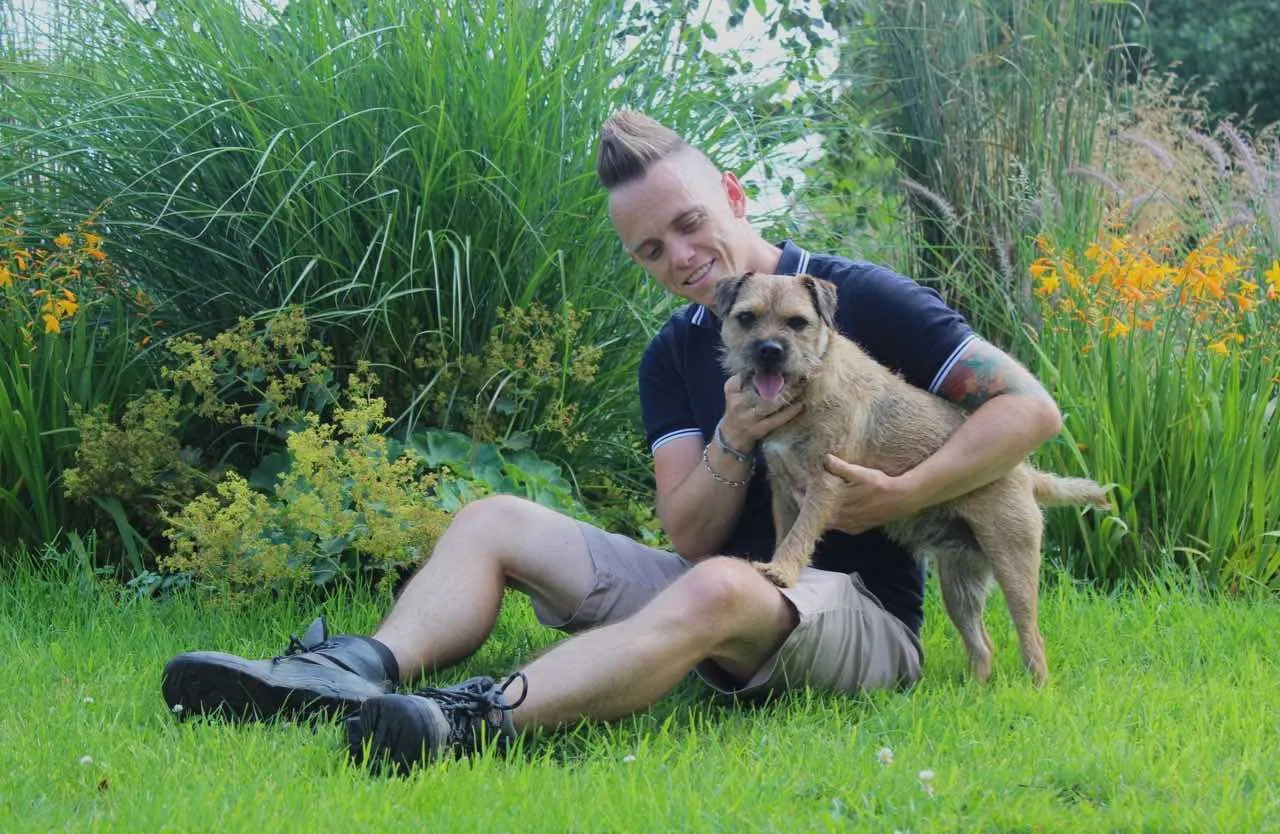-
Ask a Gardening Question Forum
 Lee Burkhill: Award Winning Designer & BBC 1's Garden Rescue Presenters Official Blog
Lee Burkhill: Award Winning Designer & BBC 1's Garden Rescue Presenters Official Blog

Welcome to the ultimate beginner gardening and garden design forum! Where no gardening question is too silly or obvious. This online gardening forum is run by Lee Burkhill, the Garden Ninja from BBC 1's Garden Rescue and a trusted group of experienced gardeners.
Whether you are a beginner or an expert gardener, it's a safe place to ask garden-related questions for garden design or planting. If you have a problem in your garden or need help, this is the Garden Forum for you!

Posting Rules: This space is open for all garden-related questions. Please be polite, courteous and respectful. If you wouldn't say it to your mum's face, then don't post it here. Please don't promote, sell, link spam or advertise here. Please don't ask for 'cheeky' full Garden redesigns here. They will be deleted.
If you need a garden design service, please use this page to book a design consultation. I will block anyone who breaks these rules or is discourteous to the Garden Ninja Community.
Join the forum below with your gardening questions!
Quote from MontyK on 30th May 2025, 8:22 amHi all! I'm new here and have a very odd and specific question as I'm try to help my parents achieve something in their garden. Forgive the long post but my question requires a bit of back story.
For a very long time we've had a leylandii hedge in our garden, recently we've be redesigning things and my parents have used it to create a 'dead hedge'. They cut back the leylandii to the trunks (so it then won't grow back), then wove offcuts and things between them for screening. This was then planted on both sides with mature shrubs, climbing plants and native hedge plants (think farmers field hedges). This created plenty of screening, colour and a haven for bugs and wildlife. The plan was as this all grew over the years the shrubs would be manageable at around 12 foot tall and the trunks of the leylandii would be filled in at the top somewhat by climbers.
The other week unfortunately this caught fire and is all now destroyed, along with loads of other things they've been working on in the garden to try and get it looking how they wanted it. They're devastated that all this progresses has been lost and I'm trying to help them find a solution.
So, here is my question. Is there a fast growing plant other than leylandii that will also die and stay as trunks when cut right back? Does anyone have any alternative ideas of how they can create this same natural look, preferably on a short timescale?
There are still a few burnt trunks left, but they've lost a lot of height and some have gone all together.
Any help would be greatly appreciated! Thanks so much for taking the time to read all of this and I hope you have a wonderful day!
Hi all! I'm new here and have a very odd and specific question as I'm try to help my parents achieve something in their garden. Forgive the long post but my question requires a bit of back story.
For a very long time we've had a leylandii hedge in our garden, recently we've be redesigning things and my parents have used it to create a 'dead hedge'. They cut back the leylandii to the trunks (so it then won't grow back), then wove offcuts and things between them for screening. This was then planted on both sides with mature shrubs, climbing plants and native hedge plants (think farmers field hedges). This created plenty of screening, colour and a haven for bugs and wildlife. The plan was as this all grew over the years the shrubs would be manageable at around 12 foot tall and the trunks of the leylandii would be filled in at the top somewhat by climbers.
The other week unfortunately this caught fire and is all now destroyed, along with loads of other things they've been working on in the garden to try and get it looking how they wanted it. They're devastated that all this progresses has been lost and I'm trying to help them find a solution.
So, here is my question. Is there a fast growing plant other than leylandii that will also die and stay as trunks when cut right back? Does anyone have any alternative ideas of how they can create this same natural look, preferably on a short timescale?
There are still a few burnt trunks left, but they've lost a lot of height and some have gone all together.
Any help would be greatly appreciated! Thanks so much for taking the time to read all of this and I hope you have a wonderful day!
Quote from Lee Garden Ninja on 2nd June 2025, 9:14 amHi @montyk
Sorry to hear of the fire that's damaged the hedge, that sounds rather traumatic. You raise an interesting point about creating dead hedges, and not many people seem to choose this form of garden boundary or barrier. Which is a shame as dead hedges are fantastic for wildlife and require zero maintenance once in in my experience!
I would recommend, rather than planting trees to let them die, why not just plant a true dead hedge instead, using the stumps as the basic footprint? It would be easier and make more ecological sense!
https://youtu.be/1TNhzMjco2c
If I may, I 'm going to go into a bit more detail for the other Ninjas on what a dead hedge is and then the very basics of how to create a dead hedge.
What Is a Dead Hedge?
A dead hedge is a natural garden barrier or wildlife habitat made from cut branches, prunings, and woody material. It’s constructed by weaving or stacking these materials between upright stakes to form a dense, screen-like structure. Yoiu often find them in cottage gardens or rural areas where nothing goes to waste.
Dead hedges are:
Eco-friendly: Built entirely from garden waste.
Wildlife-supporting: Offer shelter for insects, birds, hedgehogs and amphibians.
Functional: Act as windbreaks, privacy screens, boundary markers or composting structures.
They’re ideal for woodland-style gardens, permaculture plots, wildlife gardens, or allotments, and can even work aesthetically in modern or rustic gardens with the right styling.
Benefits of Dead Hedges
Reduces garden waste: Repurposes prunings and woody offcuts instead of burning or disposing.
Supports biodiversity: Provides nesting sites, insect habitat, and shelter for small mammals.
Improves microclimate: Windbreaks reduce evaporation and create shelter for young plants.
Low cost: No need to buy materials – it uses what you already have.
Visually natural: Blends well in wildlife-friendly or informal garden settings.
What You’ll Need
Vertical stakes or posts: Strong enough to hold the material in place. Use untreated wood such as hazel, chestnut, or recycled timber stakes.
Woody material: Branches, twigs, shrub prunings, brambles, hedge clippings. Ideally hard wood clippings as well to give a strong lasting structure, but the sky is the limit. Holly clippings which are evergreen can add a nice texture to your dead hedge.
Hammer or mallet: For driving the stakes into the ground.
Loppers or a saw: To trim down any large branches for consistent stacking.
How to Build a Dead Hedge – Step by Step
1. Choose a Site
Select an area where you want a natural barrier, boundary, screen, or habitat pile.
Ideal locations include:
Garden edges
Woodland borders
Around compost heaps or allotment plots
As windbreaks for wildlife zones or veg beds
Make sure the hedge won’t block light from key planting areas unless that’s the goal.
2. Install Upright Stakes
This is the most important step when creating a dead hedeg, in your case use the existing trunks as the outline then add stakes in between the gaps.
Space vertical posts 50–75 cm (20–30 inches) apart in a straight or gently curved line.
Drive them 30–45 cm (12–18 inches) into the ground so they’re stable.
Place a second row of stakes parallel to the first, about 40–60 cm (16–24 inches) apart, depending on how thick you want your dead hedge.
You now have a two-row framework to fill in with material.
3. Start Filling with Material
Begin layering woody prunings and branches horizontally between the two rows of stakes.
Start with thicker branches at the base for structure and stability.
Gradually build up with smaller twigs and brushwood on top.
Weave flexible material (like hazel, willow, or bramble) through the stakes if you want a more solid, interlocked finish.
Keep the stack fairly tight to avoid material collapsing or blowing out.
4. Build Up the Layers
Continue adding layers until the dead hedge is the height you want — typically between 1 metre and 1.5 metres (3 to 5 feet).
You can trim the sides with loppers or shears if you want a tidier profile.
If material settles or collapses over time, simply top it up with new prunings.
5. Maintain It Over Time
Dead hedges can last 3–5 years, depending on materials and exposure. In my experience, they last far longer, especially if you use hardwood prunings from tree cuttings and felling.
Add new prunings each year or two to replenish and build up any gaps.
Over time, older material will break down and enrich the soil underneath, especially valuable in forest garden or no-dig systems.
Wildlife Value of Dead Hegdes
Dead hedges offer year-round shelter and resources they also baffle wind against properties and are far softer on the eye that bright orange wooden fence panels and a lot cheaper too! Dead hedges offer refuge for:
Birds (such as wrens, robins and blackbirds)
Hedgehogs and small mammals
Beetles, frogs, toads and other beneficial insects
Fungi and invertebrates that help decompose wood and cycle nutrients
By placing your dead hedge near a pond, wildflower area, or log pile, you can enhance its ecological value even more as it offers a shelter belt for creepy crawlies, birds and amphibians.
Dead Hedge Tips to Note
Use a mix of materials to vary structure and texture and avoid using diseased plant material (like box blight or honey fungus). Try to use natural or untreated materials to avoid introducing toxins. Speaking to a local arborist/tree surgeon for free cuttings may be a clever way to reduce costs and waste!
Combine with living hedging or planting if you want more long-term structure, though not essential.
Do let us know how you get on!
Hi @montyk
Sorry to hear of the fire that's damaged the hedge, that sounds rather traumatic. You raise an interesting point about creating dead hedges, and not many people seem to choose this form of garden boundary or barrier. Which is a shame as dead hedges are fantastic for wildlife and require zero maintenance once in in my experience!
I would recommend, rather than planting trees to let them die, why not just plant a true dead hedge instead, using the stumps as the basic footprint? It would be easier and make more ecological sense!
If I may, I 'm going to go into a bit more detail for the other Ninjas on what a dead hedge is and then the very basics of how to create a dead hedge.
A dead hedge is a natural garden barrier or wildlife habitat made from cut branches, prunings, and woody material. It’s constructed by weaving or stacking these materials between upright stakes to form a dense, screen-like structure. Yoiu often find them in cottage gardens or rural areas where nothing goes to waste.
Dead hedges are:
Eco-friendly: Built entirely from garden waste.
Wildlife-supporting: Offer shelter for insects, birds, hedgehogs and amphibians.
Functional: Act as windbreaks, privacy screens, boundary markers or composting structures.
They’re ideal for woodland-style gardens, permaculture plots, wildlife gardens, or allotments, and can even work aesthetically in modern or rustic gardens with the right styling.
Reduces garden waste: Repurposes prunings and woody offcuts instead of burning or disposing.
Supports biodiversity: Provides nesting sites, insect habitat, and shelter for small mammals.
Improves microclimate: Windbreaks reduce evaporation and create shelter for young plants.
Low cost: No need to buy materials – it uses what you already have.
Visually natural: Blends well in wildlife-friendly or informal garden settings.
Vertical stakes or posts: Strong enough to hold the material in place. Use untreated wood such as hazel, chestnut, or recycled timber stakes.
Woody material: Branches, twigs, shrub prunings, brambles, hedge clippings. Ideally hard wood clippings as well to give a strong lasting structure, but the sky is the limit. Holly clippings which are evergreen can add a nice texture to your dead hedge.
Hammer or mallet: For driving the stakes into the ground.
Loppers or a saw: To trim down any large branches for consistent stacking.
Select an area where you want a natural barrier, boundary, screen, or habitat pile.
Ideal locations include:
Garden edges
Woodland borders
Around compost heaps or allotment plots
As windbreaks for wildlife zones or veg beds
Make sure the hedge won’t block light from key planting areas unless that’s the goal.
This is the most important step when creating a dead hedeg, in your case use the existing trunks as the outline then add stakes in between the gaps.
Space vertical posts 50–75 cm (20–30 inches) apart in a straight or gently curved line.
Drive them 30–45 cm (12–18 inches) into the ground so they’re stable.
Place a second row of stakes parallel to the first, about 40–60 cm (16–24 inches) apart, depending on how thick you want your dead hedge.
You now have a two-row framework to fill in with material.
Begin layering woody prunings and branches horizontally between the two rows of stakes.
Start with thicker branches at the base for structure and stability.
Gradually build up with smaller twigs and brushwood on top.
Weave flexible material (like hazel, willow, or bramble) through the stakes if you want a more solid, interlocked finish.
Keep the stack fairly tight to avoid material collapsing or blowing out.
Continue adding layers until the dead hedge is the height you want — typically between 1 metre and 1.5 metres (3 to 5 feet).
You can trim the sides with loppers or shears if you want a tidier profile.
If material settles or collapses over time, simply top it up with new prunings.
Dead hedges can last 3–5 years, depending on materials and exposure. In my experience, they last far longer, especially if you use hardwood prunings from tree cuttings and felling.
Add new prunings each year or two to replenish and build up any gaps.
Over time, older material will break down and enrich the soil underneath, especially valuable in forest garden or no-dig systems.
Dead hedges offer year-round shelter and resources they also baffle wind against properties and are far softer on the eye that bright orange wooden fence panels and a lot cheaper too! Dead hedges offer refuge for:
Birds (such as wrens, robins and blackbirds)
Hedgehogs and small mammals
Beetles, frogs, toads and other beneficial insects
Fungi and invertebrates that help decompose wood and cycle nutrients
By placing your dead hedge near a pond, wildflower area, or log pile, you can enhance its ecological value even more as it offers a shelter belt for creepy crawlies, birds and amphibians.
Use a mix of materials to vary structure and texture and avoid using diseased plant material (like box blight or honey fungus). Try to use natural or untreated materials to avoid introducing toxins. Speaking to a local arborist/tree surgeon for free cuttings may be a clever way to reduce costs and waste!
Combine with living hedging or planting if you want more long-term structure, though not essential.
Do let us know how you get on!


Vuelo Top 10 Garden Blogger Award 2019
Chelsea Flower Show Director Generals Trade Stand Award 2018
5 Star Trade Stand Hampton Court 2018
Garden Media Guild New Talent 2017 Finalist
RHS & BBC Feel Good Gardens Winner 2016
 To my YouTube channel
To my YouTube channel 
JOIN THE NINJAS
Join our Ninja community for your Exclusive Discounts
JOIN THE NINJAS

Be the first in line for new Guides, Discount codes and Offers